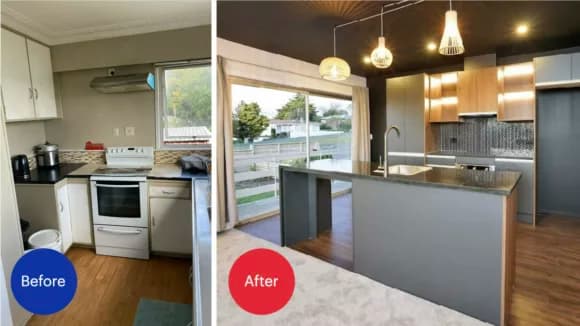Tip #3 – floor durability is paramount
In a rental, you want durability over pretty much everything. Because if something breaks or needs to be replaced, you’re typically the one footing the bill.
Remember, anything that can lift, will lift. So if your vinyl comes away from the floor, water, dirt and pretty much everything else can get under there.
That’s true too for any flooring that has any joins within it. That’s why, whatever your flooring choice is, always try to go for the smoothest option.
This is because sometimes even regular cleaning, like a weekly mop, can send water seeping into the grooves.
In durability terms, sheet vinyl is going to be your best option. Not only is this cost effective, but a practical solution too.
When it comes to the question of “which type of lino should I use?” a laminate plank is a popular choice.
In the end, it may come down to preference. Just know that what you start – you have to maintain.
So, if you choose to go for a more expensive flooring choice (like carpet or hard wood) you have to maintain that flooring, at that cost over time.


